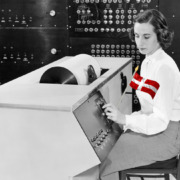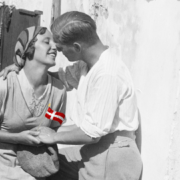Drinking in Denmark
Earlier this year, my daughter and I visited several Danish high schools to help her decide where she’ll continue her education. We looked at the classrooms, and at the laboratories – my daughter likes science. We looked at the athletic faculties, and we looked at the bars.
Yes, most of the high schools we visited had a bar, or at least a café where they serve the students beer on tap, or hard cider in cans, or alco-pops in bottles when they want to relax after class.
Now, high school students are usually 16 to 19 years old, and the legal purchase age for wine and beer in Denmark is 16, so it’s all totally legal.
It’s just a bit surprising when you come from anyplace where teenagers are encouraged not to drink alcohol to find a bar conveniently located next to the school gym.
The consequences of heavy drinking in Denmark
Drinking plays a big role in young people’s lives in Denmark; by age 14, my daughter’s class had begun to split into those who got drunk on the weekends and those who didn’t.
And their Danish parents don’t seem to mind. “It’s just part of having fun while they’re young,” one parent said to me. “I actually drank a lot more when I was younger,” said another.
That doesn’t mean that alcohol use has no consequences: a new report says 30,000 young people in Denmark have a drinking problem and only 2% of them are getting treatment for it.
(The Danish public health system is excellent for emergencies like broken bones and serious illnesses like cancer, but is less effective when it comes to long-term psychological and addiction issues.)
Early in 2020, the EU Commission reported that Denmark placed an unhappy first in Europe in binge drinking and that it was one of the reasons Danes had the shortest expected lifespan in Western Europe.
According to the report, 37% of adult Danes said they had “regular major alcohol usage,” which was nearly double the EU average of 20%.
Ale, mead, fruit wine, and syra: Historical drinking in Denmark
Alcohol has a long history in Denmark. The Vikings brewed four types of beverages: ale, mead, fruit wine, and syra, a fermented milk. – and for many centuries Danish babies have eaten øllebrød, which is a mix of old bread scraps and beer.
Fast forward a few centuries, and alcohol is still part of almost every Danish gathering, although in many circles beer is less popular than wine. “Two bottles of good red wine” is an informal currency in Denmark, what you give to the neighbor who checks in on your cat while you’re on vacation.
After the first bottle of so, nobody notices if the wine is any good or not. And there is usually more than one bottle.
Heavy, heavy drinking is deeply entrenched in Danish culture; even highly-educated adults often drink to get drunk, and simply set aside the next day for a planned hangover.
A Pepsi! A Pepsi!
What the Danes drink, and how much, is their own business. It only affects internationals when people get offended when you don’t want to drink along with them.
I’ve done a lot of interviews in connection with my books and speeches, but the only time I’ve really had a journalist go after me was in a conversation about alcohol.
We were on a radio program discussing the traditional Danish Christmas lunch, and I suggested that to make the meal more hospitable to everyone (including Muslims, Jains, Mormons, pregnant women, and designated drivers), the host should make available some non-alcoholic beverages, like a Pepsi.
A Pepsi! A Pepsi!
He couldn’t have been angrier if I had told him to feed his guests by throwing them fish from the back porch.
You could not have Pepsi at a Christmas dinner, he said. If you absolutely insisted on not drinking, a non-alcoholic beer might do. Or “Danskvand,” the local vernacular for plain sparkling water.
Sparkling water, how festive.
Lukewarm tap water
It’s better, at least, than the lukewarm water that was served at a recent business cocktail party I attended.
The host had invited a number of Danish Muslims – many of them leaders in their fields – and provided nothing to drink but glögg made of wine and brandy.
These sharply-dressed professionals had to walk around with sad little glasses of sparkle-free tap water. Good times!
I’ve seen many Danish people grimace when I tell this story. I’m not sure if they’re embarrassed at the host’s rudeness or annoyed that the guests wouldn’t just have some glögg to be part of the fælleskab.
Guilted into drinking more
The truth is, I’m not a teetotaller myself. I like an occasional glass of red wine on a grey February evening or a crisp gin tonic on a hot summer day. I even used to work for Carlsberg at their headquarters, where I helped them sell beer.
My feeling is just that drinking alcohol should be a choice and not a requirement, and that the choice of how much to consume should be up to the individual.
Some Danes – not all – seem to feel insulted when their guests don’t drink, or don’t drink as much as they do. Perhaps they see it as a comment on their own behavior, or an insult to Danish culture.
But curried herring and repeated screenings of Olsen Banden movies are also part of Danish culture, and my failure to enjoy either doesn’t seem to bother anyone at all.
Alcohol has a special, and not particularly flattering, place in the society of contemporary Denmark.
Hear all our How to Live in Denmark podcasts on Spotify and on Apple Podcasts (iTunes).
[icon name=”facebook-square” class=”fa-3x”] [icon name=”twitter-square” class=”fa-3x”][icon name=”instagram” class=”fa-3x”]
.
Buy Kay’s books about Denmark on Amazon, Saxo, Google Books, Apple Books, Barnes & Noble Nook, or via our webshop.
Read also:
The Two Months of Christmas in Denmark: Holiday Drinking Starts Now
Dating in Denmark: Get Drunk and Find Your True Love
Danes and Singing: Danish Drinking Songs and Party Songs





